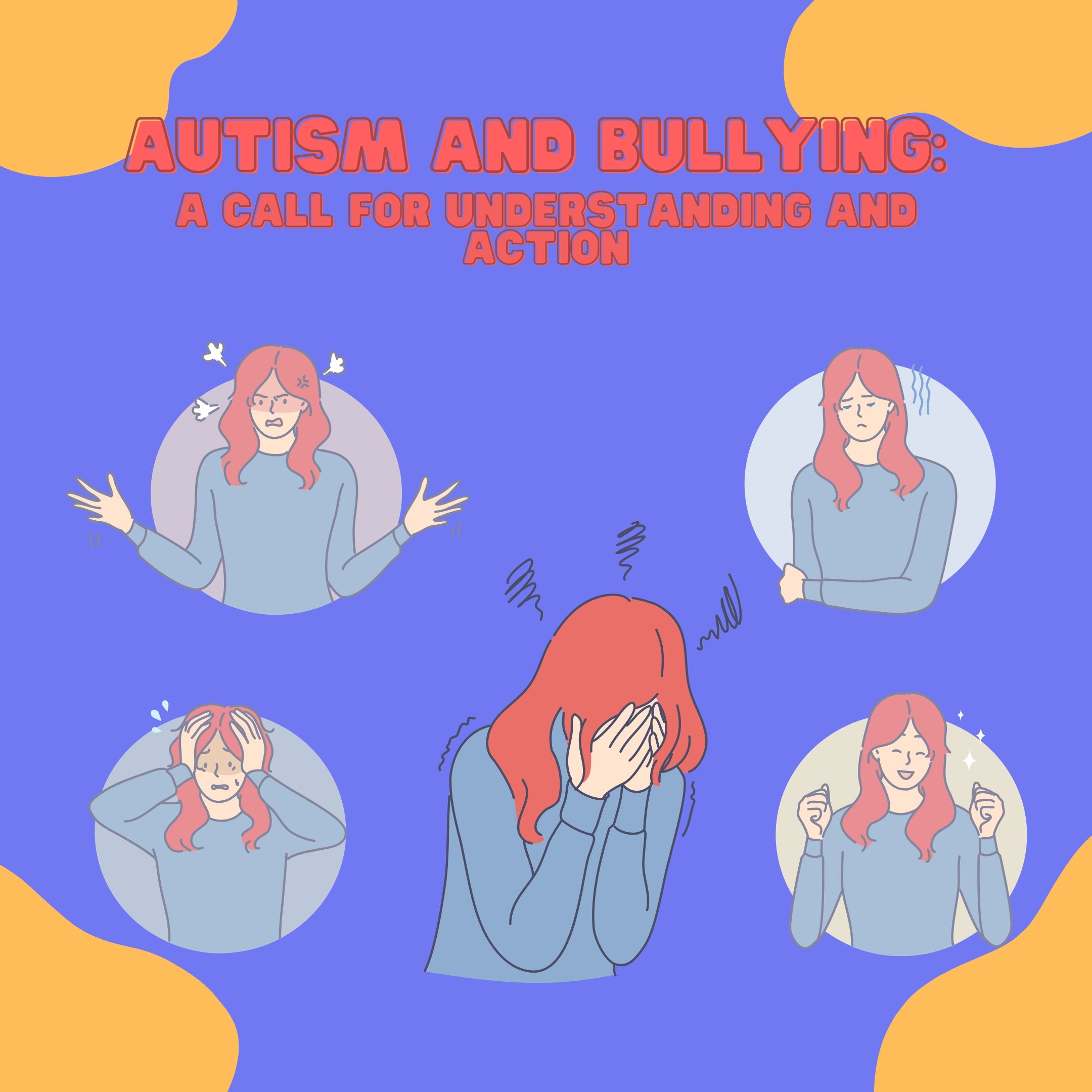
One of the most significant challenges faced by autistic individuals is bullying. In this blog we will be talking about the intersection of autism and bullying, exploring the statistics, the underlying reasons, the impact, and the risk factors associated with this issue. In the blog we also outline the crucial role schools and society have in addressing this issue, and how we can all contribute to a more inclusive and understanding environment for those on the autism spectrum.
The Unsettling Statistics and Impact
Research shows a troubling picture: studies in the US, Canada, UK, and the Netherlands show that up to 77% of children on the autism spectrum are targets of bullying and physical or sexual abuse [1, 3]. This mistreatment, a silent epidemic, can cause severe stress and trauma, but often goes unrecognized or unreported[2].
The psychological impact of bullying can be significant. Autistic individuals often recall instances of bullying, even years later[2]. The emotional scars left by these experiences can be so severe that they manifest symptoms similar to post-traumatic stress disorder[3].
The Underlying Reasons and Risk Factors
Autistic children often become targets of bullying due to their differences. Their unique behaviors, struggles with social interactions, or different reactions to stimuli can make them stand out[1].
Autistic children often do not have the communication skills to report abuse — or to be believed if they do[2]. This makes them an easier target for bullies, who know that their actions are less likely to be reported or taken seriously.
The Long-Term Harms
The harms of bullying extend far beyond the physical or emotional pain. Bullying can lead to long-term mental health issues, such as anxiety and depression[3]. These conditions can continue for a long time after the bullying has stopped. This then affect an individual's ability to form relationships, succeed in school or work, and overall quality of life. It can also negatively impact an autistic individual's self-esteem and self-worth, which can have a lasting impact on their life.
The Role of Schools: A Call for Action
Schools play a role in preventing and addressing bullying. Here are some way schools can help create understanding environment:
-
Staff Training: Provide training for all staff members, including teachers, administrators, and support staff, to recognize the signs of bullying and understand the challenges faced by autistic students.
-
Anti-Bullying Policies: Implement anti-bullying policies that address the needs of autistic students. These policies should clearly define what constitutes bullying, the consequences for bullying, and provide a clear process for reporting and addressing bullying incidents.
-
Student Education: Educate all students about autism and the importance of inclusivity and respect for all individuals. This can help to challenge stereotypes and misconceptions about autism and foster a more inclusive school culture.
-
Support Services: Provide support services for students who have been bullied, such as counseling or therapy. These services can help students cope with the effects of bullying and build resilience.
-
Peer Support Programs: Implement peer support programs, such as buddy systems or mentorship programs, to promote inclusivity and provide social support for autistic students.
-
Parental Involvement: Engage parents in efforts to prevent and address bullying. This could include providing information about the signs of bullying and what to do if their child is being bullied, as well as involving them in the development and implementation of anti-bullying policies.
Our Collective Responsibility
As a society, we need to foster understanding and acceptance of autism. This begins with education about autism and how we can show understanding. We should challenge stereotypes and misconceptions about autism and celebrate the perspectives and contributions of autistic individuals.
We also need to listen to autistic people about their experiences and take their concerns seriously[2]. This includes taking action when an autistic individual reports bullying or abuse.
Conclusion
Autistic individuals often face significant challenges, including bullying. By understanding the impact of bullying on autistic individuals and taking action to prevent and address it, we can create a safer, more inclusive world for everyone.
Note: This blog post is for informational purposes only and is not a substitute for professional advice, diagnosis, or treatment. Always seek the advice of your healthcare provider or other qualified health provider with any questions you may have regarding a medical condition.
Footnotes
-
Lin, P. Daniel, and Valsamma Eapen. “Kids On The Autism Spectrum Experience More Bullying. Schools Can Do Something About It.” Phys.Org, 9 June 2022, phys.org/news/2022-06-kids-autism-spectrum-bullying-schools.html.
-
Sohn, Emily. “How Abuse Mars The Lives of Autistic People.” Spectrum, 11 Nov. 2022, www.spectrumnews.org/features/deep-dive/how-abuse-mars-the-lives-of-autistic-people/.
-
Hwang, Soonjo, et al. “Autism Spectrum Disorder and School Bullying: Who Is The Victim? Who Is The Perpetrator?” Journal of Autism and Developmental Disorders, Jan. 2018, www.ncbi.nlm.nih.gov/pmc/articles/PMC5886362/.


Leave a comment